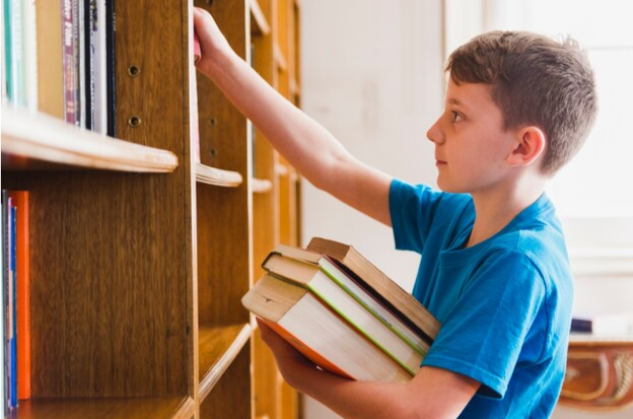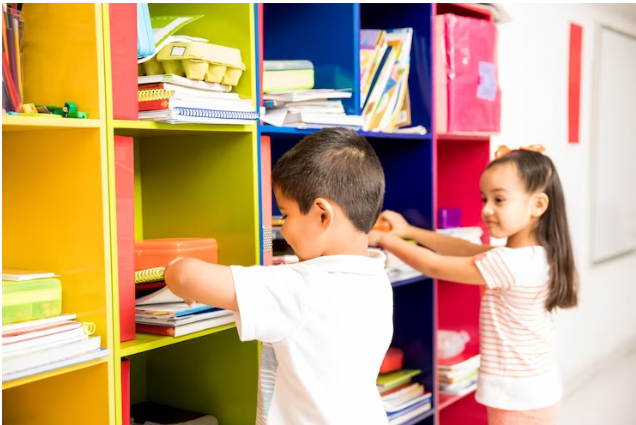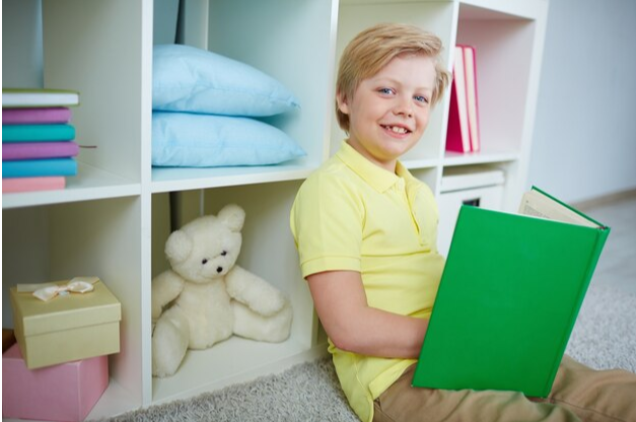One of the most important aspects of parenting is childproofing your bookcases, which helps to protect young children from typical household hazards. Parents frequently concentrate on obvious hazards like electrical outlets and staircases in their efforts to establish a secure environment. But furniture needs maintenance too, especially bookcases. Many of the numerous accidents involving children and furniture that happen every year may be avoided with the right safety precautions.
Bookcases are especially alluring to young adventurers because of their imposing design and easily accessible shelves. Curiosity-driven toddlers and young children may try to climb or pull objects from these shelves without realizing the risks. Such behaviors may cause bookshelves to topple over, putting people in danger from the furniture or the things it contains.
Childproofing your bookcases starts with identifying these risks. This manual explores doable tactics to lessen the risks that bookcases present. The goal is to provide parents with the knowledge they need to turn their houses into secure, exploratory environments for their kids, from safely organizing materials to choosing kid-friendly designs and wall-mounting them. Parents can drastically lower the chance of furniture-related mishaps by attending to these frequently disregarded details, providing a safer, more secure environment for their children to develop and flourish.
Recognizing the hazards:
Children’s natural curiosity has two drawbacks: it can lead to learning and discovery but it can also make them aware of possible threats in their immediate surroundings. For example, they are typically drawn to bookshelves not only because of the stories they contain but also because they are attractive items that are just out of reach or can be climbed. Even though this kind of behavior is normal for children when they are exploring, there are serious risks involved, especially when it comes to furniture like bookcases.

Childproofing your Bookcases’ tendency to topple over is the main cause for concern. The balance of the furniture may be thrown off when a child tries to climb or tug on a bookcase because they are drawn to something higher up. If there are heavy things on the upper shelves of a bookshelf or if the bookcase is taller and less stable, this is especially true.
A fatal outcome could occur if the bookshelf and its contents fall on the child. Such occurrences are frighteningly frequent rather than merely speculative. One of the main reasons children attend emergency rooms is furniture tip-overs, according to the Consumer Product Safety Commission. These figures highlight how critical it is that parents and other caregivers identify and lessen this risk.
It is not only prudent to make sure childproofing your bookcases in homes with small children are stable; doing so is essential to averting these preventable mishaps. As we work to establish secure environments in which our kids can develop and learn, managing these risks becomes an essential part of being a responsible parent.
The Fundamentals of Childproofing your Bookcases:
Anchoring Bookcases to Walls: Securing bookcases to the wall is the best method of preventing them from toppling over. Furniture anchors are reasonably simple to install and come in a variety of forms, including straps and L-brackets. It is essential to pick hardware appropriate for both the weight of the bookshelf and the kind of wall (brick, drywall, etc.).
Safe Book and Item Arrangement: How objects are arranged on a bookcase can affect how sturdy it is. In order to decrease the center of gravity and lessen the chance of tipping, heavier goods should be kept on the lower shelves. Bookends are useful for holding books in position, and non-slip mats on every shelf stop anything from falling off.

Extra Safety Measures: Choosing kid-friendly bookcases can improve safety much more than just organizing and anchoring them. Choose bookcases with a sturdy foundation and rounded corners. Doors that hold potentially dangerous or breakable objects can have door attachments fitted, such as childproof locks or latches.
Beyond Bookcases: A Comprehensive Method for Childproofing
Although childproofing your bookcase is essential, a child-safe house encompasses more than simply this. It is important to childproof every space and piece of furniture. This entails putting safety gates at stairwells, locking heavy furniture like dressers and TVs, and making sure little objects that could choke someone are out of reach. Use appliance locks in the kitchen, and store sharp objects like knives and cleaning supplies in secured cabinets. Toilet locks and non-slip mats are essential in the bathroom. This all-encompassing strategy makes sure your child explores safely.
Education is also essential. Safety precautions can be greatly improved by teaching kids about appropriate conduct around furniture, clearly defining boundaries, and providing explanations about why particular objects are off-limits.
Expert Assistance and Resources: The process of childproofing might occasionally seem too much to handle, particularly for new or busy parents. Getting expert assistance in these situations can be quite helpful. Professionals in childproofing can evaluate your house for possible risks that you could miss and suggest the finest safety items.
If you’d rather do it yourself, there are lots of resources out there. Safe Kids Worldwide and other websites provide advice and guidelines. Moreover, a lot of companies who make child safety items offer installation guides and videos. The process of childproofing can be made more efficient and manageable by remaining informed and making use of these resources.
Choosing a Safe Bookcase for Children
Safety in Design: Give strong bases and low centers of gravity first priority when selecting bookshelf designs. Choose bookcases with rounded corners and edges to reduce the possibility of accidents or falls.
Substance Matters: Examine the bookcase’s substance. Solid wood and other heavier materials could be more stable than lighter ones, but be sure they are properly fastened.
Taking Height and Size Into Account: There is a higher chance of bookshelves to topple over. Select units that are wider and shorter so they are less prone to tip over if climbed on.
Teaching Kids About Bookcase Safety Age-Right Conversations
Inform kids about the risks associated with climbing on furniture. For smaller children, use plain language and emphasize that bookcases are not meant for climbing.
Establishing Limits: Make it clear what may and cannot be touched on childproofing your bookcases and how people ought to behave around them.
Set an example for others to follow: Youngsters frequently imitate adult conduct. Never use the bookcase in front of them improperly; for example, avoid taking books down from the top shelf in a way that could cause the bookcase to go over.
Frequent upkeep and safety inspections
Regular Inspections: Verify the bookcase’s stability on a regular basis. Verify that it is still firmly fastened to the wall and that none of the brackets or screws are loose.
Adapting for Changes: Reevaluate the bookcase’s safety as your youngster gets older and more active. For a toddler, what was safe for a crawling newborn might not be.
Reacting to Strain and Wear: To preserve the safety integrity of the bookshelf, keep an eye out for wear and tear indicators, such as loose shelves or shaky sections, and fix them right away.
Conclusion
One of the most important steps in making your home a child-safe space is to childproofing your bookcase. You may drastically lower the risks connected to these typical household goods by selecting the appropriate bookshelf, teaching your kids, and keeping your furniture safe. Recall that childproofing is a continuous process that calls for attention to detail and flexibility as your child develops and learns. Remain vigilant and give safety first priority in every area of your house.
Childproofing your bookcase is a necessary, continuous process that changes as your child develops and becomes more curious. It is more than just following procedures; it’s about providing a secure atmosphere in which your kids can explore and learn without taking needless risks. You can make sure that your house is a safe refuge for your child’s adventures by being aware of the potential hazards, putting the proper safety precautions in place, and making use of the resources that are available. Recall that making an effort to childproof a space can help to ensure peace of mind and prevent accidents.
A vital first step in creating a child-safe environment is childproofing your bookcases. Through comprehension of the hazards and application of these workable remedies, you can considerably lower the probability of mishaps in your residence. Keep in mind that childproofing is a continuous process that changes as your child develops and becomes more curious. To keep your place safe and kid-friendly, you must regularly inspect it and make necessary adjustments to your safety precautions.
We hope you found this information helpful in your journey to create a safer environment for your family. At GuardWell Safety, we understand that every home is unique, and so are your child-proofing needs. That’s why we offer a Free Child-Proofing Consultation tailored to your specific requirements. Let our experts help you identify potential hazards and provide personalized solutions to make your home a secure haven for your little ones. Book your free consultation today and take the first step towards peace of mind.






